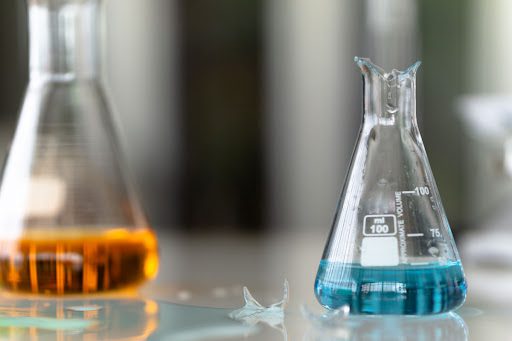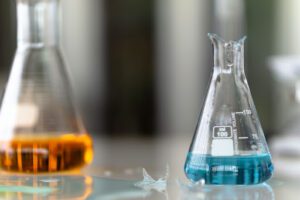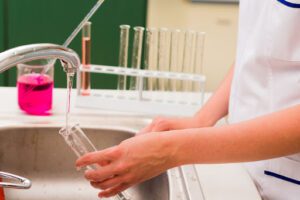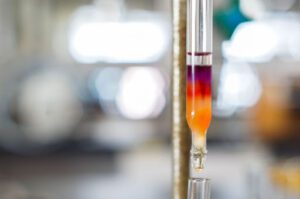
15
Jun '23

Tips for Safely Disposing Broken Laboratory Glass
Despite how careful people act in laboratory settings, accidents are still bound to happen — and when they do, it’s important to know what to do. Laboratory glassware plays a vital role in many experiments but can break if it is dropped or mishandled. Disposing of it properly is incredibly important for everyone’s continued safety, so if someone accidentally broke a beaker or tube in your laboratory, here are some tips on how to safely dispose of broken glassware.
Dispose of Broken Glassware Immediately
Whenever laboratory glassware breaks, it is imperative that it is disposed of as soon as possible. Broken glass, particularly when it results in small shards of broken glass debris, can easily lead to accidental cuts or puncture wounds. This risk is not only confined to the immediate aftermath of the breakage but also extends to the period after, due to remaining broken glass that might be scattered around the lab. Therefore, it’s crucial to clean up and dispose of broken laboratory glassware as soon as possible to prevent injury.
Never Touch It Directly
As mentioned previously, broken glassware is incredibly sharp and can potentially puncture skin it comes into contact with. For that reason, it is vital that you never directly touch it and use an alternative method of carrying it away. One means of gathering larger glass shards is by sweeping them up with a small brush and dustpan or using special tongs. Another method is by a roll of duct tape, which is effective at picking up smaller pieces of glass.
Always Use a Puncture-Proof Container
When disposing of laboratory glassware, you must never throw it out in a regular trash bag or garbage container. Rather, you must use a specially-made glass-disposal box that is capable of storing the sharp shards. They’re made with durable, puncture proof cardboard that makes it safe to store the broken shards. After disposing of all the shards in the box, you will need to seal it tightly and separate it from the regular trash to prevent accidental injuries.
Be Mindful of Hazardous Materials
Although empty glassware is not deemed a hazardous waste, it can be if it has been chemically contaminated, as it may be tainted with reactive or toxic substances. The presence of infectious and harmful substances adds another layer of danger to the glassware disposal process, meaning that extra caution is needed. Instead of placing it in the puncture-proof container, it will need to go in a special container intended for hazardous waste disposal.
If You Need to Replace Broken Glassware, Contact At-Mar Glass Today
Anyone that has to acquire new laboratory glassware after an old beaker is broken can find what they need in our catalog. At-Mar Glass offers a large selection of professionally designed glassware, including flasks, condensers, and many other lab apparatuses to ensure that laboratories have what they need to conduct their experiments. To learn and hear more about our large selection of high-quality lab glassware and to place an order, contact us today.
Share:
Latest Post


Tips for Safely Disposing Broken Laboratory Glass

How to Properly Clean Laboratory Glassware

